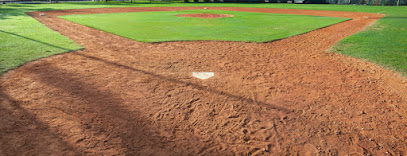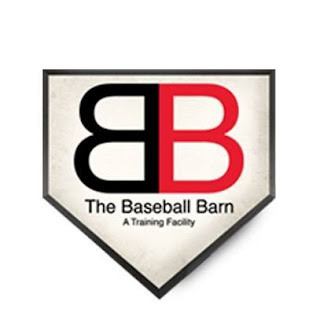Thursday, June 30, 2022
Playing Areas Near Home Plate
Monday, June 27, 2022
How to stay calm under pressure - Noa Kageyama and Pen-Pen Chen
Friday, June 24, 2022
Infield
Tuesday, June 21, 2022
Baseball Field
A baseball field, also called a ball field or baseball diamond, is the field upon which the game of baseball is played. The term can also be used as a metonym for a baseball park. The term sandlot is sometimes used, although this usually refers to less organized venues for activities like sandlot ball.
The starting point for much of the action on the field is home plate (officially "home base"), a five-sided slab of white rubber. One side is 17 inches (43 cm) long, the two adjacent sides are 8.5 inches (22 cm). The remaining two sides are approximately 11 inches (30 cm) and set at a right angle. The plate is set into the ground so that its surface is level with the field. The corner of home plate where the two 11-inch sides meet at a right angle is at one corner of a 90-foot (27.43 m) square. The other three corners of the square, in counterclockwise order from home plate, are called first, second, and third base. These bases are marked by canvas or rubber cushions, 15 inches (38 cm) square and 3–5 inches (7.6–12.7 cm) thick. Adjacent to each of the two parallel 8.5-inch sides is a batter's box.
All the bases, including home plate, lie entirely within fair territory. Thus, any batted ball that touches those bases must necessarily be ruled a fair ball. While the first and third base bags are placed so that they lie inside the 90-foot square formed by the bases, the second base bag is placed so that its center (unlike first, third and home) coincides exactly with the "point" of the ninety-foot square. Thus, although the "points" of the bases are 90 feet apart, the physical distance between each successive pair of base markers is closer to 88 feet (26.8 m).
Near the center of the square is an artificial hill known as the pitcher's mound, atop which is a white rubber slab known as the pitcher's plate, colloquially the "rubber." The specifications for the pitcher's mound are described below.
The lines from home plate to first and third bases extend to the nearest fence, stand or other obstruction and are called the foul lines. The portion of the playing field between (and including) the foul lines is fair territory; the rest is "foul territory." The area within the square formed by the bases is officially called the infield, though colloquially this term also includes fair territory in the vicinity of the square; fair territory outside the infield is known as the outfield. Most baseball fields are enclosed with a fence that marks the outer edge of the outfield. The fence is usually set at a distance ranging from 300 to 420 feet (90 to 130 m) from home plate. Most professional and college baseball fields have a right and left foul pole which are about 440 to 500 feet (130 to 150 m) apart. These poles are at the intersection of the foul lines and the respective ends of the outfield fence and, unless otherwise specified within the ground rules, lie in fair territory. Thus, a batted ball that passes over the outfield wall in flight and touches the foul pole is a fair ball and the batter is awarded a home run.
Read more, here.
(707) 290-9731
777-D Elmira Road
Vacaville, CA 95687
Website







